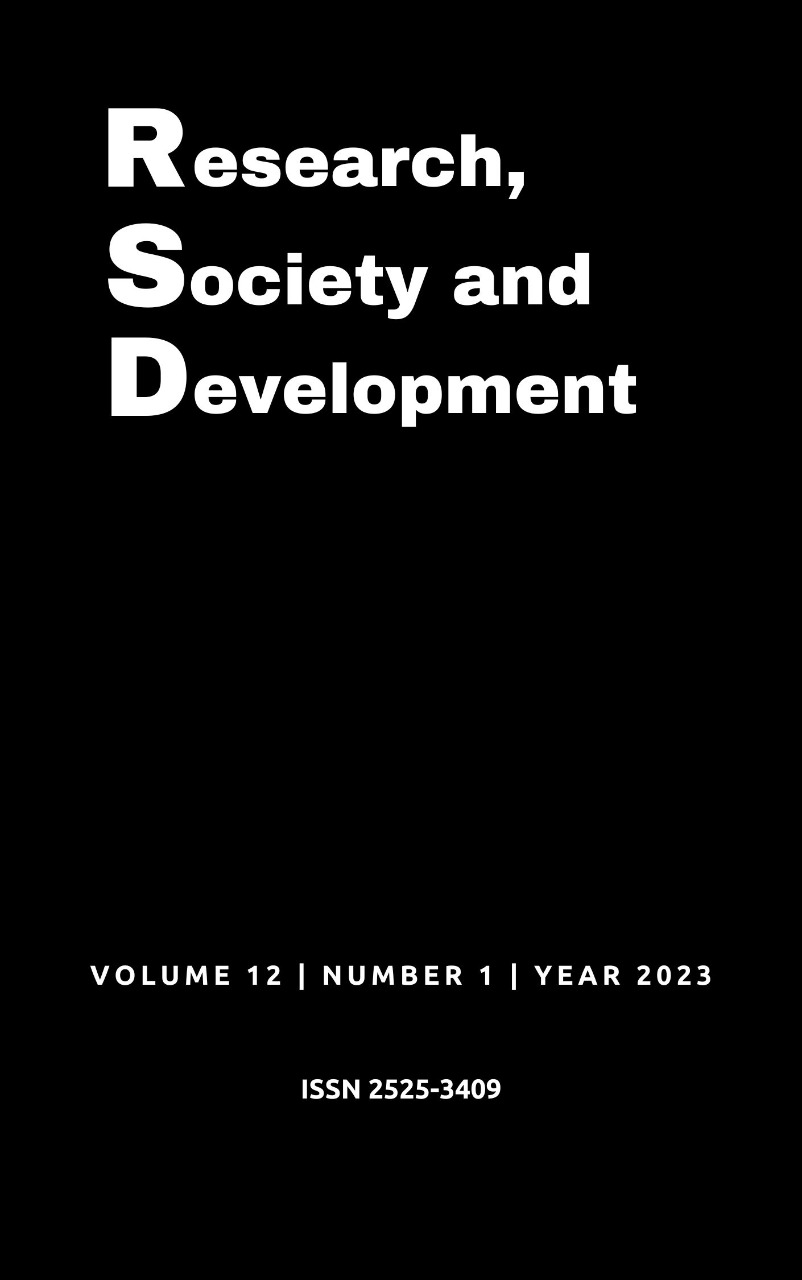Complicações relacionadas ao pós-operatório de cirurgias provenientes de traumas: uma revisão integrativa
DOI:
https://doi.org/10.33448/rsd-v12i1.39768Palavras-chave:
Emergência, Trauma., Pós-operatório.Resumo
Introdução. Uma cirurgia de trauma é um procedimento extremamente delicado pois há uma grande perda de volume sanguíneo gerando uma alteração grave na hemodinâmica. Objetivo: Analisar as principais complicações relacionadas ao pós-operatório do trauma e suas principais consequências na qualidade de vida do paciente. Devido a isso, o sistema imunológico e relacionando a coagulação fica comprometido, levando a quadros de infecção e até óbitos. Metodologia: O presente estudo trata-se de uma revisão integrativa de literatura. Foram utilizados os bancos de dados de artigos científicos para realizar as buscas:US National Library of Medicine(PubMed) e Scientific Electronic Library Online(SciELO) Latin American and Caribbean Literature in Health Sciences (LILACS) e Biblioteca Virtual em Saúde (BVS) de dados científicos até 8 de dezembro de 2022, em inglês, português e espanhol. Os artigos utilizados são do período de 2000 a 2022. Foram utilizado os unitermos “emergência" AND “trauma” AND “pós-operatório”. Resultado e discussão: O pronto atendimento na emetgencia após o trauma é o principal atendimento para se evitar um péssimo prognóstico no pós-operatório. As principais complicação dependem diretamente da gravidade da lesão e do nível de contaminação a qual o paciente foi exposto.
Referências
Al-Dam, A; Zrnc, T. A; Hanken, H. et al. (2014). Outcome of microvascular in a high-volume training centre. J Craniomaxillofac Surg. 42(07):1178-1183
Ball, C .G. (2015). Damage Control Surgery. Current opinion in critical care.21(6): 538-543.
Bellister, S. A; Dennis, B. M;& Guillamondegui, O D. (2017). Blunt and Penetrating Cardiac Trauma. Surg Clin North Am. 97(5):1065-76.
Chovanes J, Cannon J W, & Nunez T C. (2012). The Evolution of Damage Control Surgery. Surg Clin North Am. 92(4):859-75.
Ditzel, R. M.; Anderson,J. L; Eisenhart, W. J; Rankin, C. J; DeFeo, D. R; Oak, S & Siegler J. (2020). A review of transfusion- and trauma-induced hypocalcemia: Is it time to change the lethal triad to the lethal diamond? J Trauma Acute Care Surg. 88(3):434-439.
Isaza-Restrepo, A; Bolívar-Sáenz, D .J & Tarazona-Lara, T. J. R.(2017). Penetrating cardiac trauma: Analysis of 240 cases from a hospital in Bogota, Colombia. World J Emerg Surg.12:26.
Jaishi, A. A. A et al.(2017). Complications of the Arteriovenous Fistula: A Systematic Review. Journal of the American Society of Nephrology. 28(6): 1839-1850.
Kehlet, H. (2020). Enhanced postoperative recovery: good from afar, but far from good? Anaesthesia. 75(1): 54-61
Kolasiński, W. (2018). Surgical site infections - review of current knowledge, methods of prevention. Polish Journal of Surgery.91(4): 41-47.
Leite, L; Gonçalves, L & Nuno Vieira, D. (2017). Cardiac injuries caused by trauma: Review and case reports. J Forensic Leg Med. 52(1):30-4.
Leonardi, L et al. (2022). Predictive factors of mortality in damage control surgery for abdominal trauma. Revista do Colégio Brasileiro de Cirurgiões.49(01).
Mills, G. H. (2018). Respiratory complications of anaesthesia. Anaesthesia, 73(1): 25-33.
Silveira, H. J V & Fraga, G. P. (2009). Trauma do pâncreas: fatores preditivos de morbidade e mortalidade relacionados a índices de trauma. Arquivos de Gastroenterologia. 46(04):270-278.
Singaravelu, K; Saya, R & Pandit, V .(2016). Early diagnosis of penetrating cardiac and pleural injury by extended focused assessment with sonography for trauma. Heart Views. 17(4):151-3.
Singaravelu, K; Saya, R & Pandit V. (2016). Early diagnosis of penetrating cardiac and pleural injury by extended focused assessment with sonography for trauma. Heart Views. 17(4):151-3.
Sousa, A. F. L et al. (2020). Complicações no pós-operatório tardio em pacientes cirúrgicos: revisão integrative. Revista Brasileira de Enfermagem. 73(5): 15-20.
Stamenkovic, D. M, et al. (2018). Preoperative anxiety and implications on postoperative recovery: what can we do to change our history. Minerva Anestesiologica, 84(11): 1307-1317
Venara, A et al. (2016). Postoperative ileus: Pathophysiology, incidence, and prevention. Journal of Vascular Surgery, 153(6): 439-446.
Whittemore, R & Knafl K. (2005). The integrative review: updated methodology. J Adv Nurs.52(5):546-53.
Downloads
Publicado
Edição
Seção
Licença
Copyright (c) 2023 Laura Vilela Buiatte Silva; Laís Celi Mendes Rezende; Taynara Carrijo Moreira; Thiago Melanias Araújo de Oliveira; Giovanna Monteiro Rodrigues; Giovana Ferreira de Paula Silva; Mariana Soerger; Luisa Macedo Mendes Martins; Phablo De Oliveira Soares; Moreno Coelho Cyríaco

Este trabalho está licenciado sob uma licença Creative Commons Attribution 4.0 International License.
Autores que publicam nesta revista concordam com os seguintes termos:
1) Autores mantém os direitos autorais e concedem à revista o direito de primeira publicação, com o trabalho simultaneamente licenciado sob a Licença Creative Commons Attribution que permite o compartilhamento do trabalho com reconhecimento da autoria e publicação inicial nesta revista.
2) Autores têm autorização para assumir contratos adicionais separadamente, para distribuição não-exclusiva da versão do trabalho publicada nesta revista (ex.: publicar em repositório institucional ou como capítulo de livro), com reconhecimento de autoria e publicação inicial nesta revista.
3) Autores têm permissão e são estimulados a publicar e distribuir seu trabalho online (ex.: em repositórios institucionais ou na sua página pessoal) a qualquer ponto antes ou durante o processo editorial, já que isso pode gerar alterações produtivas, bem como aumentar o impacto e a citação do trabalho publicado.


